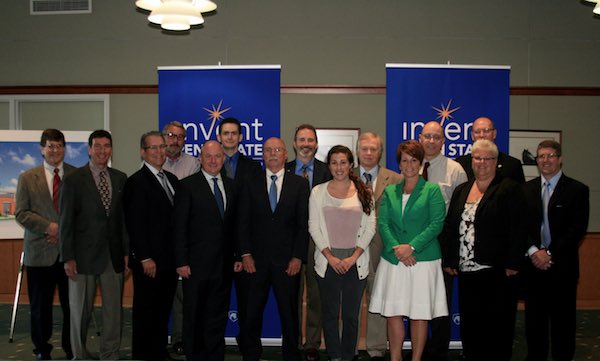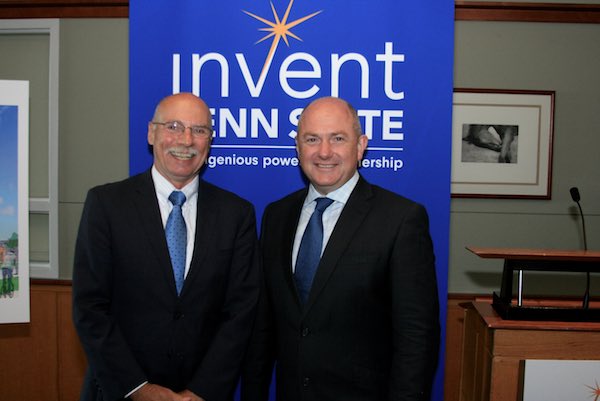
[Image above] Leaders from Morgan Advanced Materials and Penn State gather to announce their new partnership to advance carbon materials R&D. Credit: Morgan Advanced Materials
Continuing the trend towards novel industry–academia partnerships (like this one and this one), Morgan Advanced Materials and Pennsylvania State University recently announced they’re pairing up to form a new R&D center focused solely on advancing carbon materials.
According to a Morgan press release, “Over the course of three years, Morgan is expected to make a multi-million pound investment aimed at establishing a truly world-class research facility. Once operational, the center is expected to continue to create a range of highly-skilled research posts over the next few years.”
The new Carbon Science Center of Excellence will be housed in a 30,000 square-foot mixed-use facility at Penn State’s Innovation Park that is expected to complete construction in late 2017.
A Centre Times Daily article notes that the center plans to establish 15 new positions in its early stages, plus sponsored research and student opportunities, including internships and career development initiatives.
“The collaboration is a win-win situation for all involved,” Neil Sharkey, Penn State’s vice president of research says in a Penn State press release. “Our commitment to developing new methodologies and making further scientific discoveries in carbon science is closely aligned with Morgan’s company vision, mission and commitment to the markets it serves. Morgan’s expertise and commercial insights will provide our researchers with a solid foundation to deliver commercially viable solutions that distinguish both Penn State and Morgan in a fiercely competitive marketplace, while contributing to job creation and economic development in the Pennsylvania Commonwealth.”
Morgan already has established two other Centers of Excellence in the United Kingdom—one focused on insulating fiber, and the other on structural ceramics. The Carbon Science Center of Excellence will be the company’s first in North America.

Penn State vice president of research Neil Sharkey (left) and Morgan CTO Mike Murray. Credit: Morgan Advanced Materials
So why carbon materials?
Because carbon materials are a big area of research, with wide-ranging applications that continue to stretch further. Aerospace and defense applications are a big area for future integration of more and novel carbon materials, in addition to industrial, transportation, energy, and refractories applications.
According to a BCC Research report, the market for advanced structural carbon materials in the U.S. alone is predicted to grow at a compound annual growth rate of 6.3% to swell to a market value of $3.3 billion by 2020. Carbon foams are expected to be the fastest growing sector of structural carbon materials, although carbon–carbon composites, structural graphite, and carbon fiber are predicted to grow as well.
And why Penn State?
For one, it has a world-class Materials Research Institute, which is already set up with a full characterization lab and nanofabrication lab.
“One of the big attractions about Penn State was that there were so many facets of research and development there,” Morgan chief technology officer Mike Murray says in a Centre Times Daily article. “We feel it gives us a really exciting base from which we can build a close collaboration with Penn State over many years and perhaps beyond the current field of carbon science.”
In addition, Penn State’s geographic location positions the new center close to Morgan’s several manufacturing locations in Pennsylvania, located in Latrobe, St. Mary’s, Coudersport, Wilkes Barre, East Stroudsburg, and Allentown.
In a separate Penn State press release, Murray says, “As a world leader in carbon-related research, Penn State has an unrivalled reputation for innovation in its field, which we believe will add real value for our customers. The partnership will help accelerate our development of new products and capabilities, enabling us to continue to meet the future needs of our customers more quickly, efficiently, and comprehensively.”
